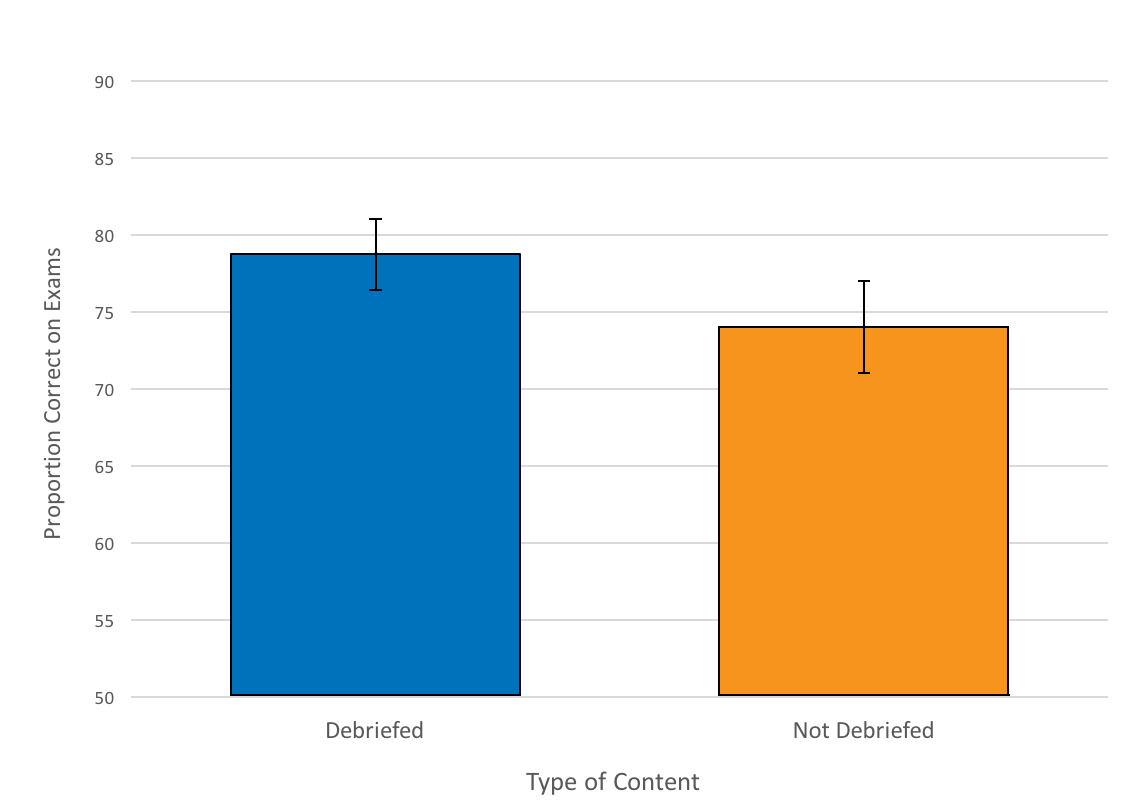Does Active Learning Help? If So, How Best to Debrief it?
Distributed Systems for Information Systems Management
In the distributed systems course, approximately 150 students complete a series of hands-on lab exercises. However, students were underperforming when asked to apply lab concepts on exams. Instructors hoped to enhance performance by replacing 15 minutes of existing lectures with active learning focused on application of concepts from lab exercises. The active learning consisted of multiple choice questions that required students to apply lab concepts to new scenarios. Students discussed these questions in small groups before selecting and visually displaying their answers. In half of the lectures, instructors debriefed the questions by focusing only on explanations of the correct answer. In the other half, instructors explained both the correct and incorrect answers.
The instructors compared exam performance on the lab content to prior iterations of the course when there was no active learning or debriefing. Controlling for incoming QPA, students performed 4% better with the active learning intervention. However, there was no evidence of a difference in learning based on the type of debriefing.

Scores on exam questions were higher when students learned with an active learning debriefing strategy (M = 78.74, SD = 16.11) vs. with no active learning (M = 74.02, SD = 19.43). Error bars are the 95% confidence intervals for the means.
The mean difference of 4.72 was marginally significant, 95% CI [9.6, -0.15], t (36) = 1.96, p = .057, d = .26.
Tags:
Dependent Variable: learning
Pedagogical Strategy: active learning
Study Design: category 2 category 3


